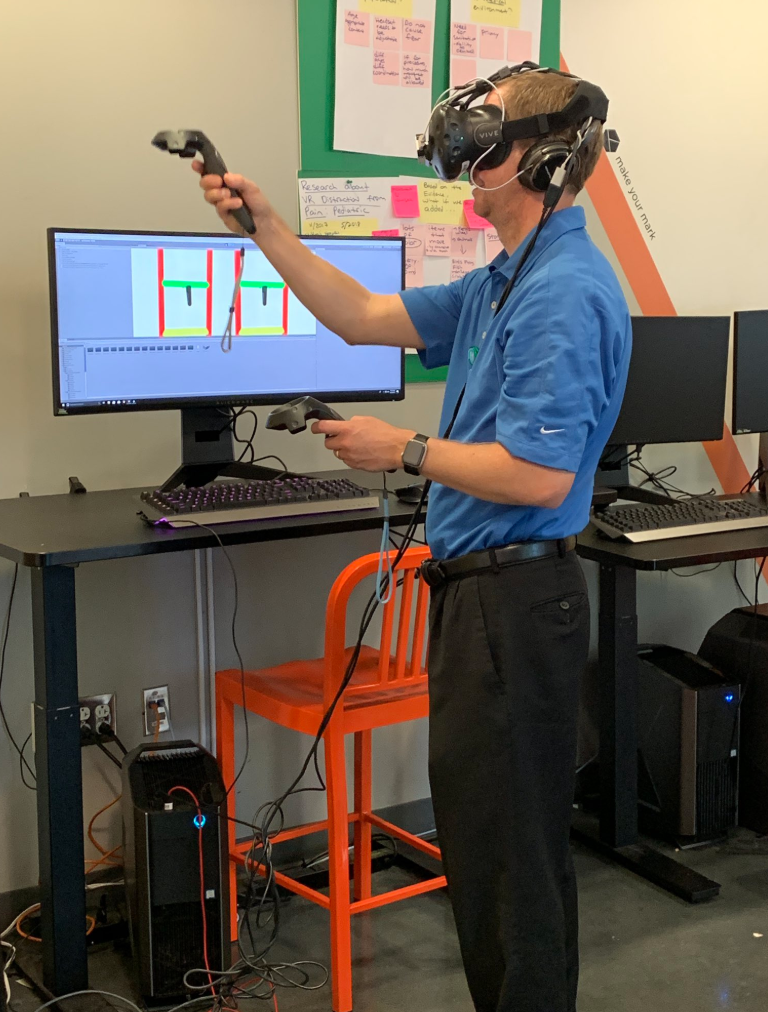Contributed by Marie Graham
Pediatric rehab patients face many challenges to complete the occupational and physical therapy that is necessary for recovery. The goal of this project was to use virtual reality to decrease discomfort for patients undergoing uncomfortable procedures, such as during Functional electro-stimulation Therapy.

Our VR designers used Design Thinking to complete this project, and because of the work’s medical nature, we realized that our users were actually two groups, not one: the patients themselves and also the medical professionals who carry out the therapy itself. How might we not only make the rehabilitation less uncomfortable to patients, but secondarily, extend the efficacy of the treatment. In other words, if patients are more comfortable, they may work harder during the therapy itself and complete more of the therapeutic measures that they were having difficulty tolerating before the immersion therapy.
The students started with questions; in fact, the students produced over 75 questions in our first day of exploratory work. They then organized these questions and began to interview both the medical professionals and the patients themselves. Polls were also sent out, and through all of the research including an exhaustive literature review of pediatric pain, distraction, and current work in immersion therapy, we came up with a solution that we felt might work.

The VR must work in two ways: distract the patients from pain and also provide comfort. We kept our research in front of us as we designed. We know that for children to relax, they need to be in an environment that feels safe. We also found that rhythmic movements and sounds are proven techniques to comfort children. We started with an island beach where waves lap the shore, birds fly above, and a patient can “sit” on the beach and listen and watch. To feel safe, children do not like to feel restrained or trapped, so a patient can choose “to walk” using a small controller. There are mountains to explore, and they can follow a path to a beach carnival on the other side of the island. The carnival side is full of distractions and fun, based on interviews and research. We combined bright colors, music, beach balls that can even be tossed, a ferris wheel that spins, even simple carnival games, where kids can win virtual prizes.
Children’s Healthcare were able to come try the prototype and are excited to move forward with the project. They look forward to having the experience in the hands of their patients possibly as early as this summer.





